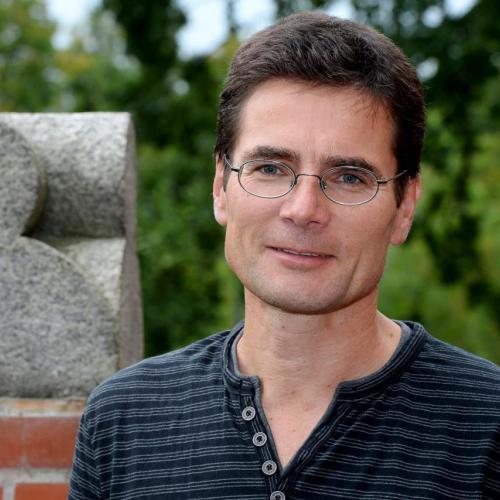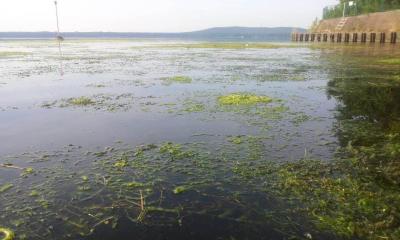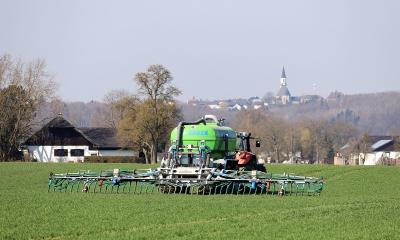
Photosynthesis and Growth of Phytoplankton and Macrophytes

Group profile
Causes and effects of mass development of aquatic plants
In the MadMacs project, we are investigating the prerequisites of mass developments of aquatic macrophytes and the effects this has on other groups of organisms, on carbon and nutrient budgets, on hydraulics and on users of lakes and rivers. We developed a guide for managing aquatic plants: https://www.niva.no/en/projectweb/madmacs/madmacs-cookbook. More information can be found on the project page.
Harpenslager, S.F., Thiemer, K., Levertz, C., Misteli, B., Sebola, K.M., Schneider, S.C., Hilt, S., Köhler, J. (2022): Short-term effects of macrophyte removal on emission of CO2 and CH4 in shallow lakes. Aquatic Botany 182, 103555, https://doi.org/10.1016/j.aquabot.2022.103555.
Long-term changes of Müggelsee and Spree
The IGB has been studying the polymictic Müggelsee in Berlin since about 1978, and the lowland river Spree upstream of Berlin since 1987. Here, the following questions are currently of particular interest:
- How does the ecosystem respond to simultaneous changes in nutrient inputs, discharge and water temperature, and to colonization by invasive species?
- To what extent can efforts to reduce external nutrient loads be counteracted by climatic changes?
- Which nutrient (phosphorus or nitrogen) limits phytoplankton development in Lake Müggelsee? Why are N2-fixing cyanobacteria not favored by strong nitrogen limitation in summer? Which nutrient should be preferentially retained in the catchment?
- What are the effects of increasing thermal stratification in summer on oxygen balance, release of nutrients from the sediment, phytoplankton development and mussel colonization?
- What feedback processes stabilize the dominance of either phytoplankton or aquatic plants in lowland rivers?
Water chemistry and plankton are analyzed weekly in the Müggelsee and fortnightly in the Spree. In Müggelsee, an automatic monitoring station records a variety of meteorological, physical and biological parameters. Mapping of aquatic plants is done by contracted divers in Müggelsee and by us in the Spree.
Shatwell, T. & Köhler, J. (2019): Decreased nitrogen loading controls summer cyanobacterial blooms without promoting nitrogen-fixing taxa: long-term response of a shallow lake.- Limnology & Oceanography 64, S166-S178, https://doi.org/10.1002/lno.11002
Recknagel, F., Adrian, R., Köhler, J. (2021): Quantifying phenological asynchrony of phyto- and zooplankton in response to changing temperature and nutrient conditions in Lake Müggelsee (Germany) by means of evolutionary computation.- Environmental Modelling and Software 146 (2021) 105224 https://doi.org/10.1016/j.envsoft.2021.105224
Fish kill in the river Oder caused by Prymnesium parvum
In the second week of August 2022, masses of dead fish and mussels appeared in the German part of the Oder River. On August 15, we found high abundances of Prymnesium parvum in the Oder River water, a haptophyte (see photo) that caused fish kills in Scandinavia and Texas, among other places. In fact, the toxin prymnesin, typical for this algae species, was detected in our samples by Dr. Varga (University of Vienna). At IGB, the fish toxicity was analysed, the algal strain isolated, genetically characterised, and cultivated. According to previous knowledge, Prymnesium prefers elevated salt concentrations, such as those measured in the Oder River in August 2022, but which would not occur naturally. This mass development was promoted by far too high inputs of phosphorus and nitrogen from sewage treatment plants and agriculture, high water temperatures, impoundments and low discharge. We will run laboratory experiments to study the environmental requirements of these algal strains. We strive to better understand the combinations of factors that allow Prymnesium to boom and the reasons and triggers of toxin production.
 Prymnesium parvum from the Oder River, 15 August 2022; photo: Katrin Preuss, IGB
Prymnesium parvum from the Oder River, 15 August 2022; photo: Katrin Preuss, IGB
Influence of vertical mixing on phytoplankton growth and photosynthesis
Traditionally, the light dependence of growth and photosynthesis is usually measured at constant light or at constant water depths. In fact, planktonic algae cannot resist water movement caused by wind or gravity. They move up and down in a mixed water column, receiving highly fluctuating light. They have to avoid inhibition by strong light near the water surface and to efficiently use low light in deeper layers within minutes. We have simulated this vertical mixing in field and laboratory experiments and analysed growth, photosynthesis and respiration of main species and of communities at different mixing conditions.
Köhler, J., Wang, L., Guislain, A., Shatwell, T. (2018): Influence of vertical mixing on light-dependency of phytoplankton growth.- Limnology & Oceanography 63, 1156-1167, https://doi.org/10.1002/lno.10761
Guislain, A., Beisner, B.E., Köhler, J. (2019): Variation in species light acquisition traits under fluctuating light regimes: implications for non-equilibrium coexistence.- OIKOS 128 (5) 716-728 https://doi.org/10.1111/oik.05297
Guislain, A. & Köhler, J. (2022): From minute to day: Ecophysiological response of phytoplankton to fluctuating light exposure during vertical mixing.- Limnology & Oceanography 67, 2809-2820 https://doi: 10.1002/lno.12240
some former group members
Dr. Tom Shatwell tom.shatwell@ufz.de
Dr. Soren Brothers sbrothers@rom.on.ca
Dr. Alexis Guislain alexis.guislain@igb-berlin.de
Dr. Sarah Faye Harpenslager s.f.harpenslager@b-ware.eu
















